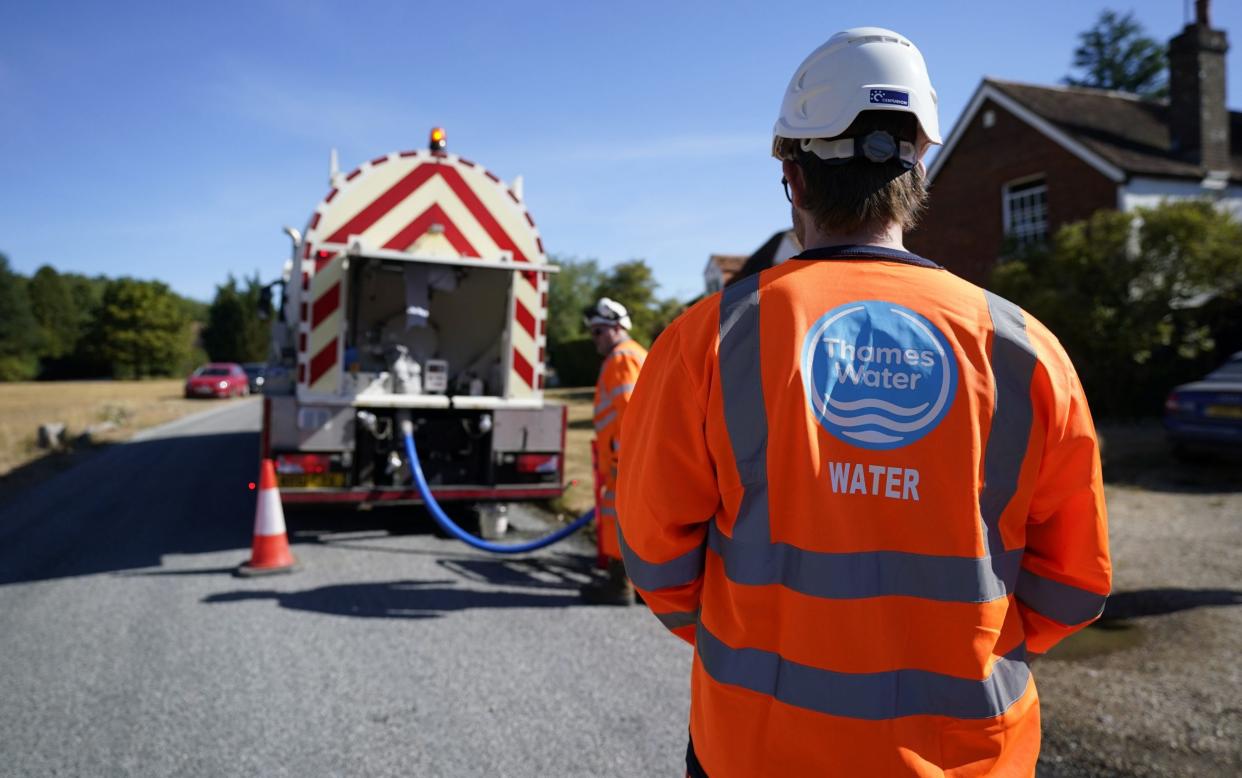Thames Water made £2m of profit a day during summer hosepipe ban

Britain’s biggest water company made more than £2m a day in profit over the summer despite imposing a hosepipe ban on 15 million people.
Thames Water posted profits of £398m for the six months to September, despite a surge in leaks and a drought that forced it to introduce restrictions on consumers.
Sarah Bentley, the company's chief executive, said it was now fixing a leak every ten minutes and added: “We are throwing everything out there and we couldn't be doing more.”
Thames Water said it experienced an “exceptionally high level of operational incidents resulting from drought” during this summer’s high temperatures. The hosepipe ban, which took effect in August, was lifted last month.
The Telegraph revealed in August that a £250m desalination plant in the Thames estuary designed to provide relief from water shortages was not being used at the height of the summer heatwave.
Ms Bentley said that the plant can only generate enough fresh water to meet about 5pc of supply, and switching it on would have delayed the introduction of the hosepipe ban by just a week.
The plant was never designed to be continuously operational, she said, and had only been used three times since it opened in 2010.
Ms Bentley said: “Its design was for intermittent use. It will be operational for next summer.
“Just to be clear, the desalination plant will never be continuously operational, because it wasn't designed to work in that way.
“Because [the desalination plant] puts very, very high pressure water on brackish salty water through these tiny little membranes… periodically they need replacing, so we have to take it offline to do this principal maintenance work.”
The industry is under pressure to address leaky pipes that lead to 2.4bn litres of water being lost every day, which critics argue means the industry has to rely more heavily on households to cut back, and have led to hosepipe bans. Thames Water only recently lifted the ban which was introduced over the summer, although last month still urged customers to show restraint on how much water they use.
Thames Water’s chief executive Sarah Bentley said at the time: “Whilst [water] storage levels have improved at many of our reservoirs, we’re not out of the woods yet. Some sites in west London remain below average, which is why we’re adopting a cautious approach and carefully monitoring water levels throughout autumn and winter.”
Critics argue that private equity, infrastructure and sovereign wealth funds have piled a mountain of debt on water companies, extracted large dividends and failed to invest in upgrading networks.
Thames Water is 18 months into a turnaround plan that is scheduled to last eight years.
Its shareholders, led by the Ontario Municipal Employees Retirement System and Britain’s Universities Superannuation Scheme, have not been paid a dividend for five years.
Ms Bentley said: “We've been leaking too much, and customers have been complaining too much. And we've been polluting too much.
“You wouldn't start from here. The state that the business is in is just not where it needs to be.
“The investment programme is absolutely to get those basics right.
“I arrived here as chief executive and we had very high levels of debt and very poor levels of performance. You've got to sort of sit there and know something's not right. Or, in fact, a lot of things have not gone right.”
There were 43pc fewer complaints in the six months to September than a year earlier, Thames Water said. The company made a loss of £581m during the same period in 2021.

